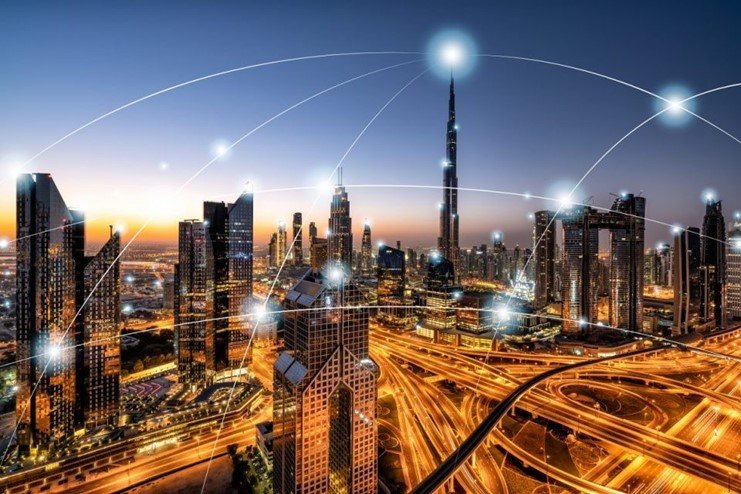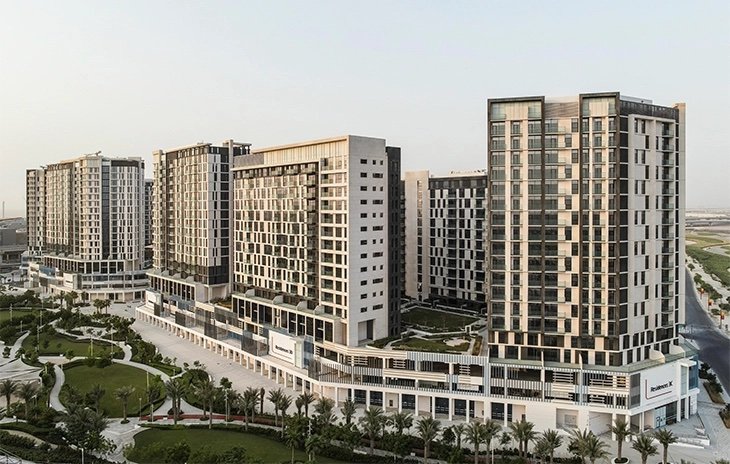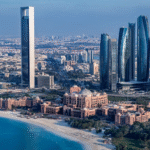Now Reading: UAE Iconic Skyscrapers Shaping the Future Skyline
-
01
UAE Iconic Skyscrapers Shaping the Future Skyline
UAE Iconic Skyscrapers Shaping the Future Skyline
UAE iconic skyscrapers are more than just tall buildings. They are powerful symbols of ambition, creativity, and the country’s vision for the future. With their futuristic designs, record-breaking heights, and advanced engineering, these towers have transformed the skylines of cities like Dubai and Abu Dhabi into global architectural wonders.
From the world’s tallest building, the Burj Khalifa, to the upcoming Dubai Creek Tower and other landmark structures, the UAE continues to push the limits of architecture. These towers are not just offices or residences; they are cultural icons that represent progress and innovation.
This article explores UAE iconic skyscrapers that define the country’s skyline, their unique designs, and how they shape the future of urban living.
Why UAE Iconic Skyscrapers Matter
Skyscrapers in the UAE are not built simply to impress; they serve a bigger purpose. They represent the country’s role as a hub for business, tourism, and innovation. They also show how the UAE has embraced modern architecture while blending it with culture and sustainability.
Key reasons why UAE iconic skyscrapers matter include:
- Global Recognition: Towers like Burj Khalifa make the UAE instantly recognizable on the world map.
- Economic Impact: Skyscrapers attract businesses, investors, and tourists, boosting the economy.
- Innovation: The design and technology used set new global standards for architecture.
- Cultural Pride: They symbolize ambition, resilience, and the UAE’s commitment to progress.
Burj Khalifa: The Jewel of UAE Iconic Skyscrapers
No discussion about UAE iconic skyscrapers can begin without the Burj Khalifa. Standing at 828 meters, it holds the title of the world’s tallest building. Completed in 2010, it remains one of the most famous architectural marvels of our time.
Why Burj Khalifa Stands Out
- World Records: Tallest structure, highest observation deck, and longest elevator system.
- Design: Inspired by desert flowers, its triple-lobed footprint ensures stability against strong winds.
- Purpose: Home to luxury residences, the Armani Hotel, offices, and observation decks.
- Symbol: It reflects Dubai’s transformation into a global city of the future.
The Burj Khalifa is more than a tower; it’s a statement that the UAE is capable of leading in innovation and design.
Dubai Creek Tower: The Future Icon
While the Burj Khalifa holds the current record, Dubai Creek Tower is expected to redefine the skyline. Designed by Santiago Calatrava, this tower is set to surpass the Burj Khalifa in height once completed.
Key Features of Dubai Creek Tower
- Design Inspiration: Modeled after the lily flower and traditional minarets.
- Functionality: A combination of observation decks, restaurants, and event spaces.
- Purpose: To anchor the Dubai Creek Harbour development, one of the largest urban projects in the world.
- Innovation: Expected to include the latest in sustainable construction and technology.
This future skyscraper will not only set new records but also serve as a cultural and entertainment hub for visitors worldwide.
Emirates Towers: Blending Business and Style
The Emirates Towers in Dubai are another example of UAE iconic skyscrapers. Completed in 2000, they consist of two towers: one for offices and the other for the luxury Jumeirah Emirates Towers Hotel.
Highlights of Emirates Towers
- Design: Triangular shape with reflective glass, symbolizing strength and progress.
- Functionality: A key business hub attracting global companies.
- Cultural Significance: A landmark for Dubai’s rapid economic development in the early 2000s.
Even after two decades, the Emirates Towers remain a timeless example of architectural brilliance.
ADNOC Headquarters: Abu Dhabi’s Landmark
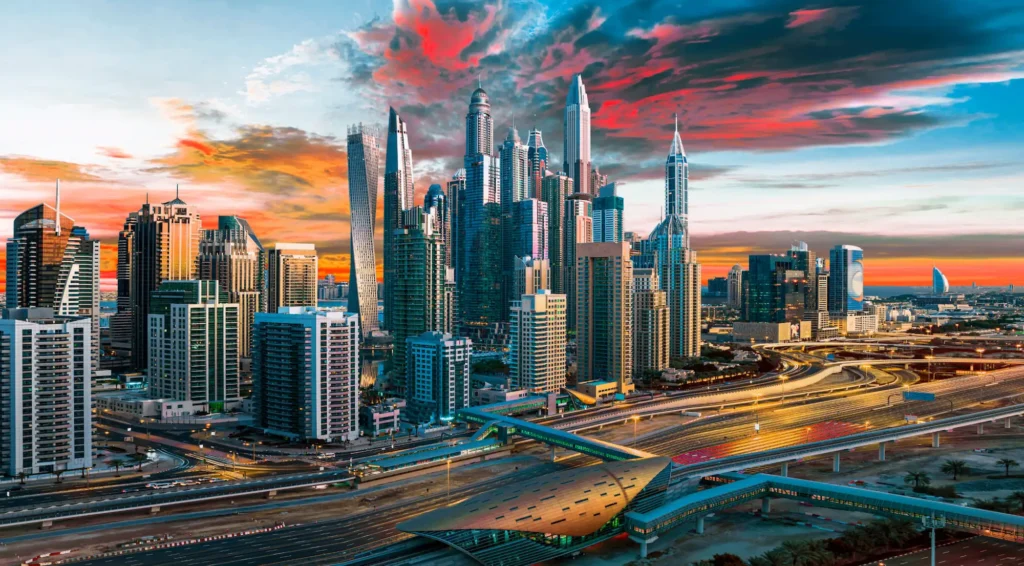
While Dubai dominates much of the skyscraper conversation, Abu Dhabi also has its share of architectural marvels. The ADNOC Headquarters is one of the most striking.
Key Features of ADNOC Headquarters
- Height: 342 meters with 65 floors.
- Design: Sleek and futuristic, with sustainability at its core.
- Innovation: Built with energy-efficient systems to reduce environmental impact.
- Role: A symbol of Abu Dhabi’s energy leadership and commitment to progress.
This tower highlights how UAE iconic skyscrapers are not only about size but also about functionality and sustainability.
Cayan Tower: The Twisting Wonder
Also known as the Infinity Tower, Cayan Tower is a 306-meter residential skyscraper in Dubai Marina. It is famous for its unique design—a 90-degree twist along its height.
Why Cayan Tower is Unique
- Architectural Feat: Each floor is rotated by 1.2 degrees, creating a spiraling effect.
- Functionality: Houses luxury apartments with stunning views of the Marina.
- Global Fame: Recognized worldwide for its creative and daring design.
Cayan Tower proves that UAE iconic skyscrapers are not only tall but also highly creative in their designs.
The Role of Technology in UAE Iconic Skyscrapers
Technology plays a crucial role in building and maintaining these towers. Modern skyscrapers in the UAE integrate cutting-edge systems such as:
- Smart Elevators: High-speed lifts that reduce waiting time.
- Energy Efficiency: Use of solar panels and eco-friendly cooling systems.
- Safety Systems: Advanced fireproofing, wind resistance, and earthquake protection.
- Smart Living: Residences with automated lighting, temperature control, and security systems.
By combining technology with architecture, these towers set global standards for urban living.
Skyscrapers and Tourism in the UAE
Tourism is one of the biggest benefits of UAE iconic skyscrapers. Millions of visitors flock to observation decks, luxury hotels, and restaurants located within these towers.
For example:
- Burj Khalifa attracts millions to its observation deck.
- Dubai Frame and Dubai Creek Tower add unique attractions to the skyline.
- Emirates Towers and ADNOC HQ showcase business excellence to global visitors.
These towers have become must-see landmarks, boosting the UAE’s tourism industry significantly.
Future of UAE Iconic Skyscrapers
The UAE shows no signs of slowing down when it comes to redefining skylines. Future projects focus on sustainability, smart technology, and cultural relevance.
Predicted trends include:
- Net-Zero Towers: Buildings that produce as much energy as they consume.
- Green Architecture: Integration of vertical gardens and eco-friendly materials.
- Cultural Inspiration: Designs reflecting the UAE’s heritage and traditions.
- Mixed-Use Spaces: Towers that combine living, working, shopping, and entertainment under one roof.
These future towers will continue to make UAE skylines some of the most admired in the world.
Final Thoughts
UAE iconic skyscrapers are more than architectural achievements; they are living symbols of ambition, innovation, and cultural pride. From the Burj Khalifa’s record-breaking height to the futuristic vision of Dubai Creek Tower, these buildings tell a story of progress and resilience.
As the UAE continues to evolve, its skyscrapers will keep shaping not just its skyline but also its global identity. They remind the world that the UAE is not just building cities it is building the future.
Follow us on: Instagram
Read More:-Dubai Housing Boom Is Stoking Fears of Another Crash



